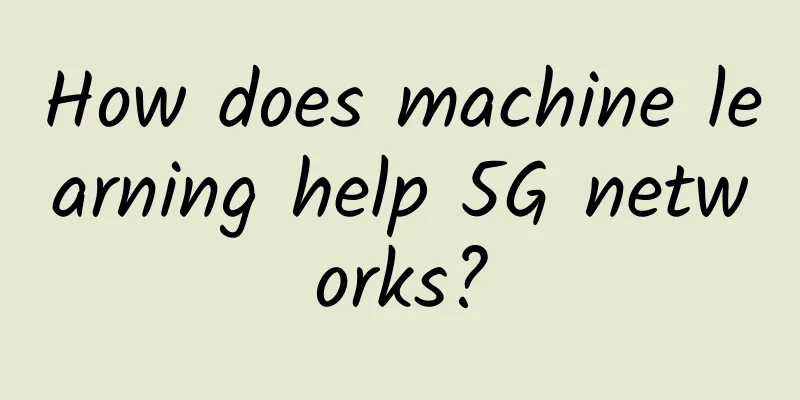What is Industrial Ethernet? What are its advantages?

|
Industrial Ethernet is an industrial network developed on the basis of Ethernet technology and TCP/IP technology. In the past, Ethernet was generally used as an office network in commercial applications. Currently, the use of Ethernet in industrial applications has become a hot topic. In the future, industrial Ethernet may become the main form of industrial control network structure, forming a one-network situation. Why do people try to use Ethernet in industrial applications? This is because Ethernet is currently the most widely used local area network. The huge commercial success, high recognition and technological progress of Ethernet make the use of Ethernet in the industrial field bring many benefits. 1. Using Ethernet is easier than other fieldbuses. This is reflected in several aspects: Generally speaking, users will have some knowledge and experience in using Ethernet, which can reduce the time and financial investment required for user training; the widespread use of Ethernet technology has enabled humans to accumulate a lot of relevant knowledge, making it easier to solve problems; Ethernet products are rich in variety, and many related software and hardware products make Ethernet technology easy to use; there are many types of Ethernet, which can support multiple transmission media and multiple transmission rates to meet the needs of various applications. 2. Ethernet products are relatively cheap. Since the Ethernet market is large, Ethernet products can usually be produced in large quantities. There are many Ethernet product suppliers, fierce competition, and low product prices. Using Ethernet will reduce costs. Although the price of commercial Ethernet products is very low, the price of industrial Ethernet products is still relatively high. If industrial Ethernet can be widely used, the cost and price will naturally come down. 3. Ethernet technology is developing rapidly and is technologically advanced, which is unmatched by fieldbus. In terms of transmission rate, the current transmission rate of Ethernet has reached 10Gbit/s, while the transmission rate of fieldbus is generally below 10Mbit/s. 4. Information integration is more convenient. Since many enterprise LANs use Ethernet, Ethernet is also used in industrial applications, which makes information integration more convenient. By integrating industrial networks with enterprise intranets and even the Internet, e-commerce, electronic manufacturing, etc. can be more convenient. 5. Meet the requirements of flat control network structure. At present, the structure of the control network is multi-layered. The more layers there are, the more complex the system is and the more difficult it is to maintain. If industrial Ethernet is used, the functions required by the information layer network and the control layer network can be fully realized. Therefore, it may eventually be flattened into one layer, resulting in a situation where Ethernet "catch everything in one network". However, the widespread use of Ethernet in industrial applications faces two major problems. First, Ethernet was originally developed for office automation applications. It is a non-deterministic network and the working environment is often very good. However, some data transmission in industrial applications requires high real-time performance, otherwise accidents will occur; and the environment of industrial applications is relatively harsh, such as strong vibration, high or low temperature, high humidity, strong electromagnetic interference, etc. Secondly, Ethernet is a general term for networks that use carrier sense multiple access with collision detection (CSMA/CD-Carrier Sense /Multiple Access with Collision Detection) in the media access control (MAC-Medium Access Control) protocol. It does not provide a standard application layer protocol for industrial applications. Therefore, in order to meet the requirements of industrial applications, further work must be done on the basis of Ethernet technology and TCP/IP technology. In general, for the former problem, the solution is to make some improvements so that Ethernet can achieve deterministic communication and work normally in harsh environments; for the latter problem, there are three solutions: one is to integrate the existing industrial application protocol with Ethernet and TCP/IP; another is to install a gateway between Ethernet and the existing industrial network for protocol conversion; and another method is to simply redevelop the application layer protocol. At present, the more influential industrial Ethernets include Foundation Fieldbus High-Speed Ethernet (FFHSE), Ethernet/IP, PROFINET, Modbus TCP/IP, etc.
EtherNet/IP
PROFINET The existence of multiple industrial Ethernets has brought a new problem: the industrial application layer protocols used by various industrial Ethernets are incompatible with each other. Although these protocols can run on the same Ethernet, devices developed for different types of industrial Ethernets still cannot interoperate. In order to solve these problems, the OPC-Object Linking and Embedding (OLE) for Process Control Foundation released the OPC Data Exchange (OPCDX-OPC Data eXchangs) standard in June 2003. The OPC Foundation is a non-profit organization dedicated to improving interoperability in automation systems. The OPC series of standards it has developed are a series of standards for industrial automation software development based on Microsoft's Component Object Model (COM-Component Object Model), Distributed Component Object Model (DCOM-Distributed Component Object Model) and OLE.
Advantech's Industrial Ethernet Switches At present, Ethernet is widely used in information layer networks in industrial applications, usually commercial Ethernet. Industrial Ethernet has also been widely used in the control layer, and its application is growing rapidly. In the device layer, industrial Ethernet is not widely used. Although it is more suitable to use Ethernet to connect complex devices such as inverters and robots, it does not show its own advantages when connecting simple sensors or actuators. However, with the rapid development of the Internet, the continuous advancement of Ethernet technology, and the further flattening of factory network architecture, it is possible that Ethernet will be used in all industrial applications in the future. |
>>: How to find the IP address of the router to improve work efficiency
Recommend
The growth of 5G data scale will help the semiconductor industry innovate and upgrade
Currently, 5G is entering a period of accelerated...
The original intention of building Huawei Software Development Cloud: to deliver excellent development methods and capabilities to software companies and developers
[51CTO.com original article] With the rapid devel...
IDC: Strong growth in enterprise WLAN market in the fourth quarter and full year 2021
According to IDC's Global WLAN Market Quarter...
Is it true or false that 5G brings new business opportunities?
5G is a very popular buzzword recently. According...
Croatia officially issues 5G license
Croatian regulator HAKOM has allocated radio spec...
10gbiz July Offer: Hong Kong/Los Angeles VPS 40% off, monthly payment starts at $2.36, Silicon Valley dedicated server/station cluster server first month half price
I received a July discount from 10gbiz, offering ...
VMISS: Hong Kong VPS annual payment starts from 85 yuan, Korea/Japan/Los Angeles CN2 GIA/AS9929 monthly payment starts from 21 yuan
VMISS is a foreign hosting service provider regis...
Everything is connected and edge computing is intelligent
On November 30, the 2017 Edge Computing Industry ...
my country's mobile IoT connections account for 70% of the world's total, with "things" connections rapidly surpassing "people" connections
On January 30, it was learned from the Ministry o...
Forecast of 5G development trends in 2021
When searching for hot words in 2020, it can be s...
DiyVM: Hong Kong dedicated server from 499 yuan, Hong Kong/US VPS 50% off 2G memory package monthly payment from 69 yuan
DiyVM is a Chinese hosting company founded in 200...
An in-depth review of five common WiFi installation solutions to determine which one is better!
Choosing a wireless WiFi coverage solution is jus...
The HTTPS certificate revocation mechanism that you don’t care about may cause you catastrophic security problems!
origin I occasionally watched "The Longest D...
Hostodo: $15/year-1GB/15G NVMe/3TB/Las Vegas & Tampa data centers
It has been more than a year since the last time ...
The real year of 5G: What it means for cloud technology
We are now in the third year of “The Year of 5G.”...


![[11.11]DogYun: 30% off on Elastic Cloud/20% off on Classic Cloud, get 1 yuan free for every 11 yuan you recharge, 100 yuan off for a dedicated server per month](/upload/images/67cabd2c6877a.webp)


![[6.18]spinservers: $89/month-2*E5-2630Lv3/64GB/1.6TB NVMe/10Gbps bandwidth/Silicon Valley data center](/upload/images/67cabe68b64e4.webp)



